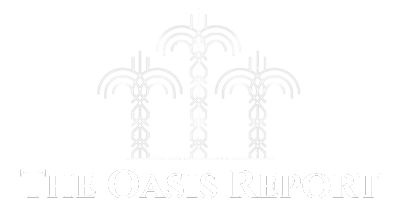Amid the euphoria over AI, ChatGPT and the latest twist in the “Magnificent Seven” tech saga, take note: US homebuilder shares are down 35-40 percent in 2025.
This doesn’t surprise me. A sharp rise in Treasury yields since March has strained the most credit-sensitive corner of the economy, housing, just as Tariffmania under Trump 2.0 guts global trade and consumer credit markets.
Housing, not AI, is the ultimate leading indicator of the US economy. And right now, it’s sending out a loud recession SOS.
So how should GCC investors position for a potential US recession this autumn?
First, consider buying long-duration US Treasury bonds.
Second, position for continued US dollar weakness against the euro, gold and sterling, as the Powell Fed is likely to cut rates four times in 2025 – not the two priced in by Wall Street.
Third, reduce exposure to high-beta US equities, those that are more volatile than the wider market. Corporate earnings are likely to disappoint and current valuations offer no equity risk premium.
Fourth, rotate out of petroleum and petrochemical megacaps in GCC markets and into non-oil sectors.
The US bond market has been in a bearish trend for two months, driven not by growth or inflation but by Trump’s erratic trade policies.
I believe the Fed will respond to weakening hard data in Q3 with a “shock-and-awe” 50 basis point rate cut. This scenario implies that long-duration Treasury yields are set to fall sharply in H2.
With the 10-year US Treasury yielding 4.45 percent and the 30-year bond at 4.96 percent, double-digit returns are possible for GCC investors over a 12-month horizon.
Yes, the S&P 500 surged 19 percent in May, rebounding from the post-Liberation Day correction. But at 21.5x earnings, US equities are dangerously expensive, just as tariffs and slowing growth begin to bite into corporate profits. A 5-8 percent correction is very possible.
Meanwhile, the Congressional Budget Office (CBO) just raised its US deficit forecast to $2 trillion – more than 7 percent of GDP. That alone explains much of the interest rate shock since March. And it’s telling that the dollar has weakened against major G10 currencies, even as the Fed holds rates while the other major central banks have begun cutting.
The rally in gold, now at $3,375/oz from a 2022 low of $1,600, signals a clear vote of no confidence from foreign investors in US economic policy.
Unlike 2022, there’s no $2 trillion fiscal cushion coming from Washington to avert recession. The real Fed funds rate is now over 200 basis points – a degree of monetary tightness that, amid softening growth and rising term premia, all but guarantees falling home prices. Mortgage rates at 7 percent are the final blow. Since March, the probability of a US recession has jumped well above 50 percent.
A US recession will trigger major shifts across GCC equity and sukuk markets. Now is not the time to be overweight petroleum or petrochemical giants like Aramco or Sabic.
We can also expect wider credit spreads in global bond and sukuk markets. This favours AA-rated issuers like Abu Dhabi and penalises lower-rated credits such as Bahrain, Oman and Sharjah.
Finally the US rate cuts will be mirrored by GCC central banks due to the dollar peg. That could act as a powerful stimulus for rate-sensitive sectors like real estate in the Gulf.
Matein Khalid is an investor in global financial markets and board adviser to leading family offices in the UAE and Saudi Arabia



